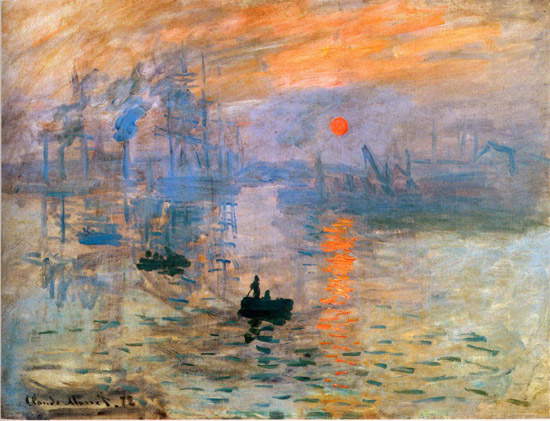In my translation today, I present a very interesting article written by Pilar Turu, which was published in Cultura Colectiva. It is about studies done by Donald Olson, an astronomer, which led him to understand the exact date and location when some works of famous artists were made. Here is the link to the original. Happy reading!
Why in Edvard Munch’s Girls on the Pier is the moon not reflected? On what date and time did Monet paint Impression? These questions led Donald Olson, an astronomer and professor of physics at Texas State University, to solve what historians and other experts and art lovers have failed to solve: the exact location and spatial moment in time when artists such as Vincent Van Gogh, Turner, Munch or Monet created their works.
Through his studies, he broke the barriers between art and science through the analysis of paintings created in the past. Although today we know, for the most part, the year the works were created, thanks to research or the signature of the artists themselves, that was not enough for Olson: he wanted to try to prove the exact day. Therefore, he researched the astronomical phenomena in the works.
Olson solves puzzles in literature, history, and art using tools from astronomy; charts, almanacs, calculations, and programs on the computer to map ancient skies. He is perhaps the pioneer of what he calls forensic astronomy (from Smithsonian.com).
His findings were published in his book Celestial Sleuth: Using Astronomy to Solve Mysteries in Art, History and Literature (The Celestial Sleuth: Using Astronomy to Solve Mysteries in Art, History and Literature).
In the book’s first chapter, Monet and Turner, Masters of Sea and Sky, Olson explains the works of these two artists, who were famous for depicting spectacular landscapes and capturing nature, sky and sea.
Astronomical considerations of day, night or twilight, as well as tides, can be used to understand the artists’ creative processes (Donald Olson). After studying Cliff at �?tretat at Sunset (1883), on the Normandy coast, Olson was able to state that the work was created on Feb. 5.
 |
| Claude Monet, Cliff at �?tretat |
Another of the works studied is the painting considered the precursor ofImpressionism:Impression(1872), made by Monet, which depicts a particular sunrise. Olson says he found the precise moment the artist made it: Wednesday, Nov. 13, 1872. This was made possible by exhaustive research and a collection of photographs that were taken at the same location; the position of the sun was also a key element in determining the time, as were the painted clouds, which helped him determine which direction the wind was blowing. All this led him to reduce the temporal possibilities and affirm the date and season of the year.
 |
| Claude Monet, Impression |
In another of his studies, he solved the motif of the reflection of houses in the water, but not of the peach-colored moon (or sun?) shape that appears in the sky on the right side of Munch’s work Girls on the Wharf. The on-site study, thanks to the participation of an aide and mapping of the area, revealed the exact location where the work was created in the summer of 1901. Although the pier no longer exists, Olson and his aide were able to determine the height of the houses and the location where Munch probably painted the work.
 |
| Edvard Munch, Girls on the Wharf. |
They therefore came to the conclusion that the sun, at the time the painting was made, had not appeared in this section of the sky, while the moon did. As for the nonexistent reflection, he understood that it was not an artistic decision, as some art historians had proposed, but was, more properly, a matter of point of view: from the artist’s perspective, the row of houses prevented the reflection.
Warning: the translation into English of the original Italian article was created using automatic tools. We undertake to review all articles, but we do not guarantee the total absence of inaccuracies in the translation due to the program. You can find the original by clicking on the ITA button. If you find any mistake,please contact us.